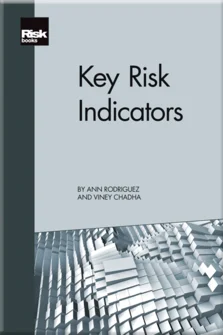Reporting the KRIs
Reporting the KRIs
Foundations
Challenges
Culture is Foundational
Enterprise Risk Management
The Enterprise Risk Management Framework
Operational Risk Management
The KRI Framework
The KRI Programme
The KRI Project
Using KRIs
Reporting the KRIs
KRI Assessment Calculator
Case Studies
The Future of KRIs and Closing Thoughts
Effective risk management requires robust internal communication about risk, both across the organisation and through reporting to the board and senior management. (Bank for International Settlements, 2001)
Risk is like fire: If controlled it will help you; if uncontrolled it will rise up and destroy you. Theodore Roosevelt
TELLING THE STORY
This chapter will covers how to create a reporting and analytics process for reporting to the board, senior management and other key stakeholders. A risk management framework exists to anticipate, prevent, identify, assess, monitor, control and mitigate risks. While all the elements of a strong enterprise and operational risk programme contributes to this lifecycle, without a robust reporting framework that leverages key risk indicators, even the best programme will not be effective in managing the risks of the firm.
What is in the reporting framework
Reports are the main products of risk management functions. They are tangible and quantitative, and if well done they are actionable – ie, lead to prevention or early detection and mitigation of problems. In the event of a fire, losses can be avoided through responding to a smoke
Copyright Infopro Digital Limited. All rights reserved.
As outlined in our terms and conditions, https://www.infopro-digital.com/terms-and-conditions/subscriptions/ (point 2.4), printing is limited to a single copy.
If you would like to purchase additional rights please email info@risk.net
Copyright Infopro Digital Limited. All rights reserved.
You may share this content using our article tools. As outlined in our terms and conditions, https://www.infopro-digital.com/terms-and-conditions/subscriptions/ (clause 2.4), an Authorised User may only make one copy of the materials for their own personal use. You must also comply with the restrictions in clause 2.5.
If you would like to purchase additional rights please email info@risk.net











